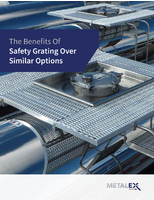Motion Sensors / Detectors / Transducers
Wireless Patient Monitoring System improves ulcer prevention.
Press Release Summary:
Comprising of wearable sensors, Leaf wireless patient monitoring system improves caregivers' pressure ulcer prevention processes. Data collected by sensor is communicated wirelessly to central monitoring stations or mobile devices, enabling caregivers to check on patient position and movement. Alerts are issued when necessary to ensure patients are repositioned according to prescribed turning schedules to reduce pressure ulcer incidences.
Original Press Release:
VA Presentation Shows New Wireless Patient Monitoring System Improves Pressure Ulcer Prevention Process
Leaf Healthcare data at NPUAP conference demonstrates better compliance with patient turn protocols
PLEASANTON, Calif. -- Clinicians from the Veterans Affairs Medical Center in Boise, Idaho, will demonstrate that Leaf Healthcare's new, wireless patient monitoring system can significantly improve a caregiver's pressure ulcer prevention processes. Their presentation will take place at the National Pressure Ulcer Advisory Panel (NPUAP) Biennial Conference in Orlando, Fla., this week.
The VA team will present a poster entitled "Look Who's Turning," which is based on nearly 3,300 hours of turn data collected using the Leaf Patient Monitoring system deployed at a medical/surgical unit at the Boise facility. After unit nurses were trained on how to use information from the system, compliance with the center's patient turning protocols exceeded 90 percent. National studies have found that compliance typically ranges from 15 percent to 66 percent.(i ii iii iv)
"We expected the sensors to help us increase compliance with patient turn protocols," said Margaret Doucette, DO, lead author of the poster. "But we found the Leaf system also enabled us to deploy our clinicians more effectively to improve patient care. Leaf monitoring has reduced the resource burden required for patient turning by roughly 80 percent without compromising care or pressure ulcer prevention efforts. That ensures we provide the highest quality care, while allowing us to contain costs."
Dr. Doucette, who is chief of Physical Medicine and Rehabilitation and director for Wound Care at the Boise Center, said the facility's turn protocols have been rewritten to include the use of Leaf technology and that the system's metrics will become part of the center's monthly nursing quality criteria.
"We are pleased that the VA Medical Center in Boise found Leaf technology useful in its efforts to prevent pressure ulcers," said Mark Smith, vice president, sales and marketing at Leaf Healthcare. "Nurses and hospitals are searching for innovative ways to reduce pressure ulcers - which affect more than 2.5 million U.S. patients each year - and this presentation provides valuable insights into how that can be accomplished."
Institution-acquired pressure ulcers are a leading threat to modern quality healthcare. Research by the U.S. Department of Health and Human Services' Agency for Healthcare Research and Quality shows that pressure ulcers cost the nation's healthcare system more than $11 billion a year.  The condition is both excruciatingly painful for patients and costly for providers since it is considered preventable and, therefore, does not qualify for reimbursement by government and other payers.
To help healthcare providers reduce these costs - while improving patient safety and clinical outcomes - Leaf creates wireless patient monitoring solutions.
The Leaf system is comprised of a small, lightweight, wearable sensor that electronically monitors a patient's position and movements. Data collected by the sensor is communicated wirelessly to central monitoring stations or mobile devices so that caregivers can check on patient position and movement. The system provides alerts when necessary to ensure that all patients wearing a Leaf Sensor are repositioned according to their prescribed turning schedules to reduce incidence of pressure ulcers. The device has been cleared for sale by FDA 510(k).
About Boise VAMC
The Boise VA proudly serves veterans in the Boise, Idaho area in its main medical center and in community-based outpatient clinics/outreach centers. Boise is part of the Veterans Integrated Service Network (VISN) 20 that includes the states of Alaska, Washington, Oregon and most of the state of Idaho. The medical-surgical unit in which the quality improvement project was conducted is a 27-bed unit. The veterans admitted to this unit have complex medical and/or psychiatric diagnosis that compound their hospital stay. Surgical patients comprise a variety of specialties: orthopedic, general, vascular and urology.
About Leaf Healthcare, Inc.
Leaf Healthcare creates wireless patient monitoring solutions for health care providers seeking more efficient, cost effective ways to improve patient safety and clinical outcomes. The Leaf Patient Monitoring System wirelessly monitors a patient's position and movement and uses that data to automate and document the management of prescribed turn protocols for patients at risk for hospital acquired pressure ulcers. The company continually seeks to incorporate more patient monitoring features and capabilities into its technology platform, enabling ever-broader improvements to patient safety, clinical efficiency and patient outcomes. To learn more, visit www.leafhealthcare.com
Leaf Healthcare is a proud supporter of the National Pressure Ulcer Advisory Panel (NPUAP). The NPUAP is an independent organization and does not endorse or promote the products or services of any of its supporters.
(i) Are We Ready for This Change? Preventing Pressure Ulcers in Hospitals: A Toolkit for Improving Quality of Care. April 2011.
(ii) Healthcare Cost and Utilization Project, HCUPnet, Nationwide Inpatient Sample, 1993-2006. Agency for Healthcare Research and Quality, Rockville, MD. AHRQ, Center for Delivery, Organization, and Markets.
(iii) Lyder CH, Preston J, Grady JN, Scinto J, Allman R, Bergstrom N et al. Quality of care for hospitalized medicare patients at risk for pressure ulcers. Arch Intern Med 2001;161:1549-54.
(iv) Gunningberg L. Are patients with or at risk of pressure ulcers allocated appropriate prevention measures? Int J Nurs Pract 2005;11:58-67
CONTACT: Mark Smith, Leaf Healthcare, 503-887-5895, mark.smith@leafhealthcare.com; Jim Martinez, 312-543-9026, jim@rightstorygroup.com




